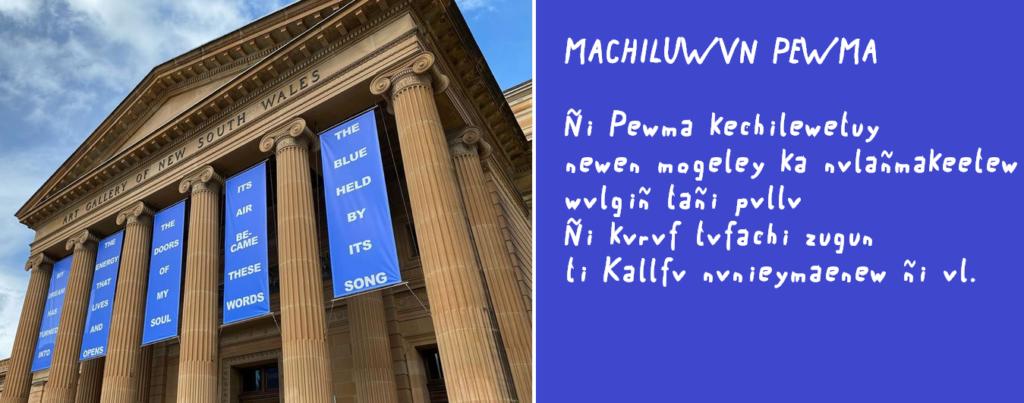K’acha Willaykuna
Our Unlearning Hour
Newsletter #7
Survivance Stories #1
April 6, 2020
There can be no business (or busyness) as usual. We cannot carry on Our Unlearning Hour regardless. These newsletters are no longer the fruits of an intimate group discussion in the Wexner Café (our last meeting on March 6th, when four of us shared stories and read together an oral history about the Amazonian ancestral tree of plenty by Nonuya artist Abel Rodríguez, feels like another world!). These gatherings, unlike our classes, cannot be swiftly and ungracefully transformed into a growing schedule of Zoom meetings. We all have much more pressing and immediate concerns, like trying to survive. So, as with everything else, this is another message to appear in your email inbox announcing an inevitable cancellation (During this time of crisis; Owing to the COVID-19 pandemic…etc). We are now all more vulnerable to the dominance, tragedy and victimry of disease and death (depending on our already existing levels of precarity or privilege).
So, Our Unlearning Hour is no more, so what are we still doing here in your inbox? Well, we are still here because we appreciate how we need something equating Our Unlearning Hour more than ever – we need to share our stories and ideas about how we are living, working, communicating, planning, grieving, resisting at this time of crisis. More immediately, we need to continue the process of unlearning we initiated in the This Decoloniality reading group. So, we have decided to continue this work in another form. We want to devote this space to sharing a powerful decolonial tool that we believe can be used to help us through this time: survivance. This is not Jacques Derrida’s concept of spectral existence between life and death, but a concept formed by Anishinaabe cultural theorist Gerald Vizenor who describes survivance as:
So to replace Our Unlearning Hour, let us present: Survivance Stories. Still adopting the format of a newsletter (with links to share while we are apart), Survivance Stories is a call to our community to share stories of Indigenous presence and continuity as a mechanism for all of us to unlearn the inevitable shock doctrine and crisis management to come (at our university and at the state and federal level – when this is all over, there will need to be cutbacks…)
To start us off, allow me (Richard Fletcher) to share a story of survivance that directly impacts my own research and teaching (and its continuation at this time). I am currently writing a book called Whisper into a Hole about decolonial art education after documenta 14 (an exhibition that took place between Athens, Greece and Kassel, Germany in 2017). The third chapter of the book is devoted to Indigenous knowledge and the question of mediation (as opposed to appropriation) by non-Indigenous allies (like myself). The guiding theme of this chapter is the process of reflection as well as the figure of the mask, and I am especially interested in how online platforms become powerful sites for Indigenous knowledge transmission through art making. As part of this research, several months ago I was excited to learn about the direction of the 22nd Biennale of Sydney, Australia, called NIRIN, which would focus on Indigenous artists, and was to be curated by Wiradjuri artist Brook Andrew (whose work I first encounters at the 8th Asia Pacific Triennial in Brisbane in 2015). NIRIN was committed to a series of Indigenous ideas or concepts BILA (River = Environment), GURRAY (Transformation), MURIGUWAL GIILAND (Different Stories); NGAWAAL-GUYUNGAN (Powerful-Ideas = The Power of Objects); DHAAGUN (Earth = Sovereignty and Working Together), YIRAWY–DHURAY (Yam-Connection = Food) and BAGARAY-BANG (Healing).
Now, as with the majority of exhibitions, NIRIN has been forced to close due to COVID-19 and has been used as an exemplary case for folks in the art world to a death knell for the whole concept of the global biennial exhibition (closer to home, the Cleveland FRONT triennial just postponed from 2012 to 2022). (See the article ‘The End of the Art World as We Know It’).
Yet here is where survivance kicked in. Registering the significance of their project, the organizers and artists, embarked on an ambitious virtual version of the exhibition in collaboration with the Google Arts and Culture Program. To start this process, NIRIN has already transitioned online by mapping each of its key Indigenous ideas and concepts onto an online platform (from its own learning resources on its website, to Spotify, Facebook, Instagram and YouTube).
To celebrate this act of exhibitionary survivance with our K’acha Willaykuna community, I want to share the work of participating artist and Mapuche poet Elicura Chihuailaf Nahuelpán.
His poem Machiluwvn / Iniciación / Initiation, taken from his book, ‘Of Blue Dreams and Counterdreams’, was used to transform the façade of the Art Gallery of New South Wales across five large banners. In homage to the transformation of NIRIN into a virtual format, I created this image of a photo of the façade (taken by Brook Andrew and posted on his Instagram feed) alongside the original Mapuche text.

Please write and send your own contribution to Survivance Stories to the K’acha Willaykuna email list (kachawillaykuna@lists.osu.edu) and I will archive them here: https://minusplato.com/ongoing/kacha-willaykuna/survivance-stories